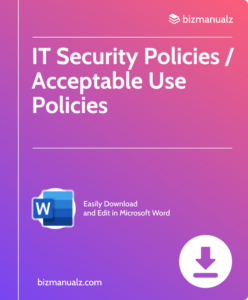CIO Cyber Incident Response Plans

As a modern business owner or leader, you may be aware of the increasing threat of cyber attacks and the devastating consequences they can have on an organization. In today’s digital world, having a well-developed cyber incident response plan is crucial in protecting your company from these threats. This article aims to provide essential information and tips for creating an effective CIO cyber incident response plan to ensure the safety and security of your business. CIO Cyber Incident Response Plans.
What Is a CIO Cyber Incident Response Plan?
A CIO Cyber Incident Response Plan is a strategic framework that outlines procedures for managing and mitigating cyber threats. It specifically includes steps for identifying, containing, eradicating, and recovering from security incidents. In addition, it clearly defines roles and responsibilities, communication protocols, and methods for continuous improvement.
A pro-tip to keep in mind is to regularly test and update your response plan to ensure its effectiveness in addressing evolving cyber threats.
Why Is a CIO Cyber Incident Response Plan Important?
An effective CIO cyber incident response plan is crucial for mitigating and managing cyber threats within an organization. It provides a clear outline of steps to be taken in the event of a cyber incident, ensuring a coordinated and efficient response to minimize potential damage and facilitate a quick recovery process. With a well-defined plan in place, organizations can effectively reduce the impact of cyber incidents, protect sensitive data, maintain operational continuity, and preserve their reputation.
What Are the Potential Consequences of Not Having a CIO Cyber Incident Response Plan?
Not having a CIO cyber incident response plan can have severe consequences, such as data breaches, financial losses, reputational damage, and legal implications. Organizations may also face regulatory fines, erosion of customer trust, and extended periods of downtime due to cyberattacks.
Furthermore, without a response plan, chaos can ensue, hindering the ability to effectively contain and resolve incidents.
What Are the Key Components of a CIO Cyber Incident Response Plan?
A cyber incident response plan is a crucial aspect of any organization’s cybersecurity strategy. As the CIO, it is your responsibility to ensure that your company is prepared to handle and mitigate cyber threats effectively. In this section, we will discuss the key components of a CIO cyber incident response plan.
From establishing an incident response team to conducting a post-incident analysis, each component plays a crucial role in protecting your organization from cyber attacks. Let’s dive into the details of each component and understand how they work together to create a comprehensive incident response plan.
1. Incident Response Team
An efficient incident response team is crucial in quickly and effectively addressing cyber threats. Here are the necessary steps to establish an incident response team:
- Identify skilled individuals from various departments including IT, security, legal, and communication.
- Establish clear roles and responsibilities for each team member.
- Provide specialized training and regular drills to keep the team well-prepared.
- Develop communication channels to coordinate during incidents.
- Collaborate with external experts for advanced incident management.
When forming an incident response team, it is important to have a diverse range of expertise and to continuously train the team to enhance their readiness.
2. Communication Plan
- Establish a clear chain of command for communication during a cyber incident.
- Define communication channels and methods for incident reporting and updates.
- Train employees on the Communication Plan and their roles during an incident.
- Ensure that the 2. Communication Plan complies with data protection and privacy regulations.
For effective communication during cyber incidents, it’s crucial to regularly test and update the 2. Communication Plan to address any shortcomings and align it with evolving cyber threats.
3. Identification and Classification of Incidents
- Identify Incident Types: Differentiate between different types of incidents, including malware attacks, phishing attempts, unauthorized access, and data breaches.
- Classify Incident Severity: Categorize incidents based on their potential impact and the level of threat they pose to the organization’s operations and data security.
- Establish Incident Prioritization: Determine the criticality of each incident to effectively allocate resources and respond promptly.
- Document Incident Details: Maintain a comprehensive record of incident specifics, such as initial detection time, affected systems, and potential vulnerabilities exploited.
4. Response and Mitigation Strategies
- Evaluate the scope and impact of the incident.
- Implement immediate measures to contain the incident and prevent further damage.
- Identify and isolate affected systems or networks.
- Engage law enforcement or relevant authorities if necessary.
- Notify stakeholders, employees, and customers as per the communication plan.
For enhanced response and mitigation strategies, consider conducting regular drills, updating response procedures, and collaborating with external cybersecurity experts for insights and guidance. Additionally, it is important to have a well-developed plan in place for responding to and mitigating incidents, including regular drills and updates to procedures. Seeking guidance from external cybersecurity experts can also greatly enhance response and mitigation efforts.
5. Recovery and Restoration Plan
- Assess the Damage: Evaluate the extent of the cyber incident’s impact on systems, data, and operations.
- Isolate Affected Systems: Quarantine compromised systems to prevent further damage and contain the incident’s scope.
- Data Recovery: Implement backup systems to restore lost or corrupted data, ensuring minimal disruption.
- System Restoration: Rebuild or reconfigure affected systems to their pre-incident state, bolstering security measures.
- Testing: Conduct rigorous testing to validate the effectiveness of recovery efforts and ensure system functionality.
5. Recovery and Restoration Plan
6. Post-Incident Analysis and Prevention Measures
- Conduct a thorough post-incident analysis to identify any vulnerabilities and weaknesses.
- Implement measures to strengthen security and prevent similar incidents from occurring in the future.
- Educate the team about the lessons learned from the incident and the importance of following security protocols to avoid future incidents.
- Regularly update and test the incident response plan to stay prepared for evolving cyber threats.
Pro-tip: Consistently reviewing and updating the incident response plan is crucial in maintaining resilience against cyber threats.
How to Create a CIO Cyber Incident Response Plan?

CIO Expertise Implementing Cybersecurity Best Practices
As a CIO, it is crucial to have a well-developed cyber incident response plan in place. This ensures that your organization is prepared to handle any potential security breaches or cyber attacks.
In this section, we will discuss the key steps in creating a comprehensive CIO cyber incident response plan. From identifying potential threats and vulnerabilities to establishing roles and responsibilities, and developing communication protocols, we will cover all the essential elements of a successful plan. Let’s dive in and learn how to create a strong and effective response plan for your organization.
1. Identify Potential Threats and Vulnerabilities
- Perform a comprehensive risk assessment to identify any potential threats and vulnerabilities within the organization’s systems and networks.
- Utilize penetration testing and vulnerability scanning to uncover any weaknesses in the infrastructure.
- Engage in gathering threat intelligence to stay updated on any emerging cyber threats that may be relevant to the industry.
- Evaluate the security posture of third-party vendors and partners to identify any possible risks associated with their systems or services.
2. Establish Roles and Responsibilities
- Identify key stakeholders across departments.
- Assign clear roles and responsibilities to each team member, as part of establishing roles and responsibilities.
- Establish a chain of command for decision-making during an incident.
- Define communication protocols for reporting and escalating incidents.
- Ensure training and awareness programs for all staff regarding their roles and responsibilities, as part of establishing roles and responsibilities.
3. Develop Communication Protocols
- Establish a clear chain of command and communication flow within the incident response team.
- Define communication methods, such as emails, phone calls, or secure messaging platforms, for different types of incidents.
- Ensure that all relevant stakeholders are aware of their roles and responsibilities in the communication process.
- Develop templates for standardized communication messages to ensure consistency and accuracy during incident response.
- Regularly review and update communication protocols, as part of the 3. Develop Communication Protocols, to align with the evolving cyber threat landscape.
4. Create a Plan for Incident Identification and Response
To create a comprehensive plan for incident identification and response, follow these steps:
- Evaluate potential cyber threats and vulnerabilities.
- Establish clear roles and responsibilities for the incident response team.
- Develop communication protocols for swift and accurate information sharing.
- Create a detailed plan for effectively identifying and responding to cyber incidents.
- Prepare a thorough strategy for recovering and restoring systems after an incident.
- Plan for a thorough post-incident analysis and implement prevention measures.
Pro-tip: It is important to regularly review and update your incident response plan to stay aligned with evolving cyber threats and technological advancements.
5. Establish a Plan for Recovery and Restoration
- Assess Damage: Evaluate the extent of the cyber incident’s impact on systems, data, and operations.
- Restore Data and Systems: Prioritize the recovery of critical systems and data, ensuring their integrity and functionality.
- Implement Security Measures: Integrate enhanced security protocols to prevent future incidents and protect restored systems.
- Test Restoration: Validate the effectiveness of the recovery process through comprehensive testing and validation.
- Update Incident Response Plan: Incorporate lessons learned from the incident into the response plan, ensuring readiness for future events.
- Establish a Plan for Recovery and Restoration: Develop a comprehensive plan for recovering and restoring systems and data in the event of a cyber incident.
6. Plan for Post-Incident Analysis and Prevention Measures
- Conduct a comprehensive post-incident analysis to determine the underlying cause and contributing factors of the cyber incident.
- Implement preventive measures such as enhancing security, providing employee training, and conducting regular security audits.
- Update the incident response plan based on the findings of the post-incident analysis to strengthen future incident prevention and response.
Consider utilizing external expertise for a thorough analysis and recommendations, ensuring continuous improvement in preventing and responding to cyber incidents.
What Are Some Best Practices for Implementing a CIO Cyber Incident Response Plan?
To effectively implement a CIO cyber incident response plan, it’s crucial to:
- Establish a dedicated team for incident response with clear roles and responsibilities.
- Regularly update the plan to reflect the evolving cyber threat landscape.
- Conduct regular training and drills to ensure preparedness and familiarity with the response procedures.
- Collaborate with relevant stakeholders across the organization to ensure a coordinated response to cyber incidents.
By following these best practices, organizations can improve their cyber incident response capabilities and minimize potential damages.
Frequently Asked Questions
What is a CIO Cyber Incident Response Plan?
The CIO Cyber Incident Response Plan is a comprehensive strategy that outlines the steps an organization will take in the event of a cyber incident, such as a data breach or cyber attack.
Why is a CIO Cyber Incident Response Plan important?
Having a CIO Cyber Incident Response Plan in place is crucial for organizations to effectively and efficiently respond to cyber incidents. It helps minimize the impact of the incident, protect sensitive information, and maintain business operations.
Who is responsible for creating and implementing a CIO Cyber Incident Response Plan?
The Chief Information Officer (CIO) is typically responsible for creating and implementing a CIO Cyber Incident Response Plan. However, the plan should involve input from various departments and stakeholders to ensure a comprehensive and effective response.
What are the key components of a CIO Cyber Incident Response Plan?
A CIO Cyber Incident Response Plan should include a detailed incident response team, communication protocols, a comprehensive incident response plan, and procedures for identifying, containing, and recovering from a cyber incident.
How often should a CIO Cyber Incident Response Plan be reviewed and updated?
A CIO Cyber Incident Response Plan should be reviewed and updated regularly, preferably at least once a year. However, it is recommended to review and update the plan whenever there are significant changes in the organization’s infrastructure, technology, or operations.
What are some common mistakes to avoid when creating a CIO Cyber Incident Response Plan?
Some common mistakes to avoid include not involving key stakeholders in the planning process, not keeping the plan up-to-date, and not testing the plan through simulated cyber incidents. It is also essential to ensure that the plan aligns with industry best practices and regulatory requirements.

















Leave a Reply